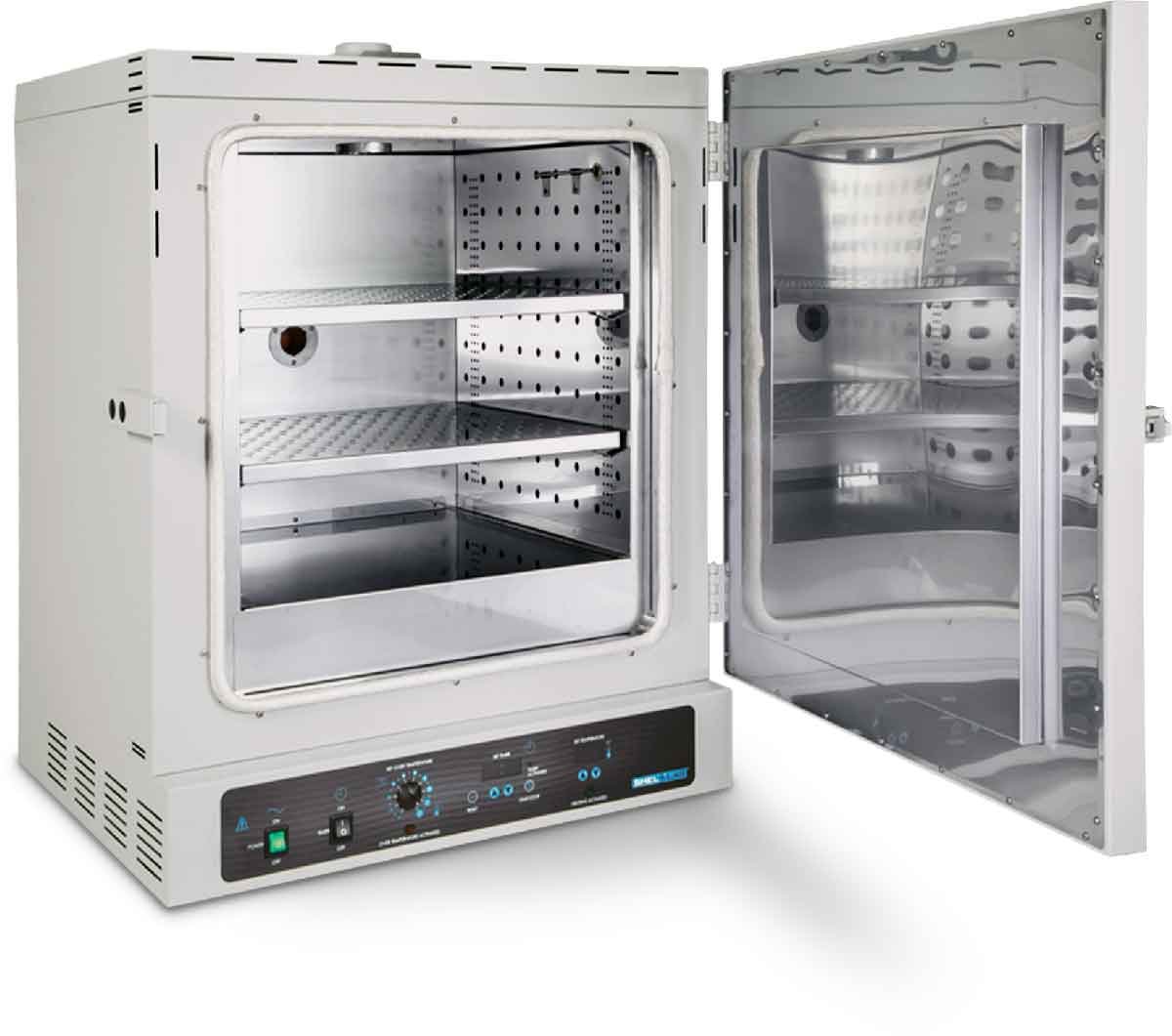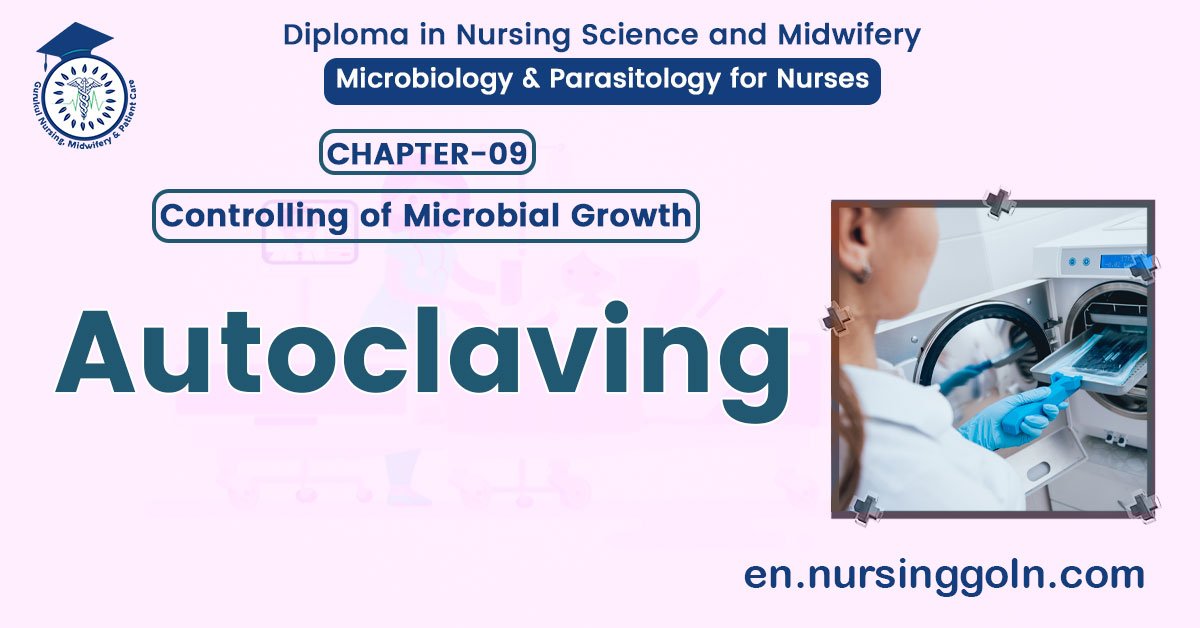Concept about Autoclaving- Basic microbiology, parasitology, and immunology; nature, reproduction, growth, and transmission of common microorganisms and parasites in Bangladesh; prevention including universal precaution and immunization, control, sterilization, and disinfection; and specimen collections and examination. Students will have an understanding of common organisms and parasites caused human diseases and acquire knowledge about the prevention and control of those organisms.
Concept about Autoclaving
Sterilization which operate at high temperatures (In excess of 100°C) and pressure are called autoclaves.
Or
Autoclaving is a method of sterilization by moist heat in which substances are sterilized at 121°C for 15 minutes.
Types of Autoclave: They fall into two categories
1. Double chamber autoclave
2. Single chamber autoclave
Time, pressure and pressure used in autoclave
- 121°c temperature under 15 Ibs/sq inch pressure for 15 minutes

Figure: Autoclave
Principle of Autoclave
- It is steam sterilization above 100°C in a pressure chamber.
- With rise of pressure boiling of water also rises provided no air is present.
- When autoclave is closed & made air tight, water starts boiling, the inside pressure increases & water boils above 100°C
- Steam under pressure unmixed with air has more temp than that mixed with air
- Steam under pressure has more penetrating power as steam condenses to water on contact with materials lowering pressure that draws more steam inside
- During condensation of steam to water, large amount of latent heat is liberated thus increasing the efficiency of sterilization
Advantages & Disadvantages of Autoclave
| Advantages of auto- clave |
|
| Disadvantages of autoclave |
|
Autoclaving is the most efficient process of sterilization due to following reasons:
1. Autoclave is a moist heat procedure & moist heat kills organisms and spores at lower temperature and in shorter duration (20 hours at 100°C by dry heat is almost equal to 15. minutes at 121°C by moist heat).
2. Penetrating power of moist heat is better than dry heat due to run meritunya baslamwal
- Low density of steam
- Condensation of steam and contraction of its volume creates negative pressure on the surface (1600 ml of steam condenses into 1 ml of water).
- Liberation of latent heat (518 calories for 1 ml of water) during condensation of steam.
Hot Air Oven
Hot air oven is a method of sterilization by dry heat above 100°C. The oven is heated by A electricity and temperature is maintained by thermostat. This is usually a method of choice for sterilizing glassware.
- The temperature is 160° C for 1 hour
- The variation of temperature is prevented by circulating air with a fan.

Example of articles sterilized by hot air oven:
- Glass wares: Petridishes, test tubes, flasks, beaker, cylinder, glass pipettes, swab sticks etc.
- Oily fluids like grease & powder.
Advantages of hot air oven:
- Glass wares like petridishes, swab sticks, and glass syringes can be sterilized.
- Powder, fats, grease etc. can be sterilized.
- Sharp cutting surgical instruments can be sterilized.
Disadvantage of hot air oven:
- Need more temperature
- Time consuming
- Plastic materials cannot be sterilized in this process
- Natural and synthetic fibers cannot be sterilized
- Destroy the constituents of normal media
Differences between Autoclave & Hot Air Oven
| Traits | Autoclave | Hot Air Oven |
| 1. Time needed | Less time consuming | More time consuming |
| 2. Penetrating power | Moist heat has more penetrating power. | Dry heat has less penetrating power. |
| 3. Latent heat | Latent heat of evaporation is release | Latent heat of evaporation is not released |
| 4. Fats, Oils & powders | Can’t be sterilized | Can be sterilized |
| 5. Natural & synthetic fliers | Can be sterilized | Can’t be sterilized |
| 6. Uses | Dressing, apron, glove, catheter, surgical instruments except sharp cutting instruments) can be sterilized | Glass wares like petridishes. swab sticks & glass syringes, and powder, fats, grease, sharp cutting surgical instruments etc. can be sterilized |
Definition of Pasteurization
Pasteurization may be defined as the process by which milk is heated upto such a temperature & for such a period of time to destroy the microorganisms within the milk without altering the composition, flavor color & nutritive value of milk.
Methods:
- Holding method – 63°C for 30 minutes
- Flash method – 72°C for 15 seconds.
- HTST method – High temperature short time.
Uses: For the sterilization/killing of organism of milk & milk products causes milk borne diseases,

Bacteria removed by pasteurization:
- Mycobacterium bovis
- Salmonella
- Escherichia
- Brucella abortus
Advantages of pasteurization over the boiling: Boiling causes destruction of many nutrients flavor of the milk, but pasteurization preserves all the quality of the milk.
Read More….
